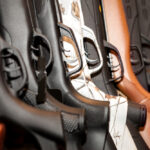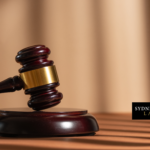Plan to Protest? Expect Nerve Damage

Australian Police have been adding Long Range Acoustic Devices (LRADs) to their law enforcement arsenal, a move which has raised concerns amongst health experts, civil rights advocates and those who feel the ability to protest is an important part of democratic society.
LRADs are capable of controlling crowds and breaking up large protests by using loud piercing sounds, similar to jet engines. Those who’ve been subjected to LRADs say they can induce splitting headaches, panic attacks, and even cause permanent hearing loss.
LRADs have become the weapon of choice for some US police forces who wish to disperse unruly crowds.
But there has been a significant backlash against their use, and even threats of legal action for the damage caused. Many believe their use if often unnecessary, and can constitute a form of police brutality.
LRADs look like a satellite dish and emit long pulses of a high frequency sound. They are capable of emitting 150-decibel beams of sound. Normal conversation is usually around 60 decibels and 130 decibels is considered the average noise threshold for most human beings.
Potential Dangers
One woman, Karen Piper, who was observing the crowd at a G20 protest in Pittsburgh, Pennsylvania, has been left with permanent hearing damage as a result of the device.
She says that immediately after the device was used, she felt dizzy, nauseous and disorientated. She sought medical advice when her hearing failed to recover, with tests revealing that permanent damage had been caused to nerves by her exposure to the LRAD. Her hearing will never recover.
Uses
LRAD systems were originally developed for use by the military – where there was a need for urgent evacuations. The technology is now used extensively by maritime services, often in search and rescue operations where there is a need to communicate over long distances. The device can also be used to drive wildlife away from sensitive or dangerous areas, and to ward off pirates.
More than half of Australia’s police forces now own an LRAD – including Victoria, Western Australia, South Australia and Queensland.
The NSW and NT Police Forces have refused to comment about the circumstances in which they propose to use the LRAD, but with tough anti-protest laws recently coming into effect in NSW, it is feared that our state will follow the US lead and use the devices against protesters.
Secrecy
Health experts are particularly concerned about the introduction of LRADs here. They are calling for the release of guidelines for their use, believing there are too many unanswered questions around the effects of the devices – particularly their ability to cause nerve damage and resulting hearing loss to members of the community.
Karen Piper took legal action against the City of Pittsburgh, who settled for damages of $72,000. She is now working to lobby governments and law enforcement agencies in the US for clearer guidelines around the use of LRADs.
In Australia, those against the introduction of LRADs are pushing for wider public debate, and some believe the secrecy around the purchase of these weapons, and the lack of guidelines for their use, is as dangerous as the weapons themselves.






